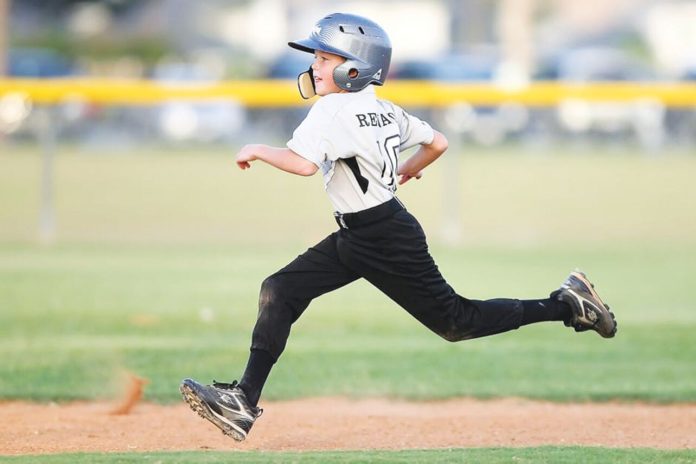The Pesach dishes are packed away and chometz is once again ubiquitous. Although here on the calendar spring has not yet quite sprung, Little League season is looming, as is a return to outdoors sports and activities. So there’s no time like the present to segue to a discussion about concussions and children.
What does a parent need to know?
Let’s define “concussion.”
A concussion is a complex process that affects the brain. Typically, it’s an injury brought on by a mechanical force that causes temporary changes in the way the brain works. People think they happen when someone is knocked unconscious while playing sports. This is true only partially. Most concussions occur off the playing field or court: Think car or bicycle accidents, fights, or even minor falls. Concussions can happen with any head injury, often without a loss of consciousness.
In a concussion, the force is transmitted to the head and can result in usually short-lived symptoms such as headaches, brief loss of consciousness, nausea, and/or dizziness. These symptoms are believed to be due to a temporary shift in the neurotransmitters (chemicals that allow cells to communicate) in the brain. This helps explain the symptoms associated with a time-limited injury such as a concussion.
In reality, a concussion is a type of traumatic brain injury. The brain, comprised of soft tissue and cushioned by spinal fluid, is encased in the hard, protective skull. It can move around inside the skull and even bang against it. If the brain bangs against the skull – for example, in a fall on a playground or a whiplash-type of injury – blood vessels can tear and the nerves inside the brain can be injured. These injuries can cause a concussion.
Diagnosing a concussion can be a frustrating process. Whereas an x-ray or MRI will reveal a broken bone or torn ligaments, present technology doesn’t include imaging or blood tests that enable a definitive diagnosis of a concussion. Medical providers will sometimes order head CTs or brain MRIs to make sure that there is not a more severe injury, i.e., bleed into or around the brain, but the scans cannot diagnosis a concussion.
Currently, diagnosing relies on a detailed history and physical exam. Does your child have a history of headaches or migraine headaches? Is there a learning disability? Is there a tendency to depression or anxiety? If an injury occurs when a child is playing in an organized sport, a sideline assessment should be performed to look for common post-concussive symptoms. Depending on the severity of the presentation, your physician may refer you to an emergency department in order to evaluate and to help rule out a more severe injury.
You may wish to check out whether your child’s school, camp, athletic team or gymnastics program has an emergency protocol in place. If yes, are you aware of what is the protocol should there be, G-d forbid, an injury or accident?
I advocate that any child involved in contact sports or gymnastics should complete a yearly – either at the pediatrician’s office or for the athletic director – SCAT2. This assesses brain function. By having a baseline completed SCAT2 on record, it can serve as a basis of comparison if there are any injuries.
What should be done for one who has had a head injury or concussion?
First, seek professional help. Coaches and/or Certified Athletic Trainers (CATs) are often the first people on the scene when a child is concussed. Ideally, they have been trained to conduct a proper sideline assessment. Ideally, many perform baseline assessments prior to a season beginning so there is a sense of each person’s bottom line. Further, they should be in touch immediately with your child’s pediatrician or Hatzalah.
Getting an immediate sense of how your child is doing after an impact is the most important step in protecting him from worsening head injuries.
If there’s a head impact, it’s best to sit it out. Obtain the proper sideline assessment no matter what because you can still sustain a concussion without losing consciousness.
The person should be watched closely for signs of a concussion, even if the person feels okay. An undiagnosed concussion can put someone at risk for brain damage and even disability. So anyone who has any symptom of a concussion should be seen as soon as possible by a doctor.
Sports-related concussions glean loads of attention. If you suspect a sports-related concussion, please take the following steps: 1) The player should immediately stop playing or practicing; 2) The player should be checked by a doctor before resuming practicing or playing.
Pediatric neurologists claim that most (80%) concussions are resolved within 2-3 weeks of the injury. Rest (both physical and mental) is a big factor here and your physician can help guide you.
What do we do for the other 20%? If you have concerns, have your child reevaluated: You know him best. There’s no one “prescription” of rest and that can be applied to all cases. The nuances of each injury and the individual patient need to be considered before determining ongoing intervention and treatment. It’s important that you communicate regularly with the physician.
As the weather is forecasting warmer temperatures, we will be outdoors a lot more. Kids will resume riding bikes to school. There’s also skateboarding. Please make sure that your child wears his helmet and follows the rules of the “road.” People may try to taunt him into being a daredevil. Empower your children from the inside out to follow the rules that are there for their protection and wellbeing. If they don’t take you seriously, consider sitting together with them and visiting websites such as headstrongforlife.org which has pictures and videos of children who have sustained head injuries – and whose lives have been changed irreversibly.
As always, daven.







